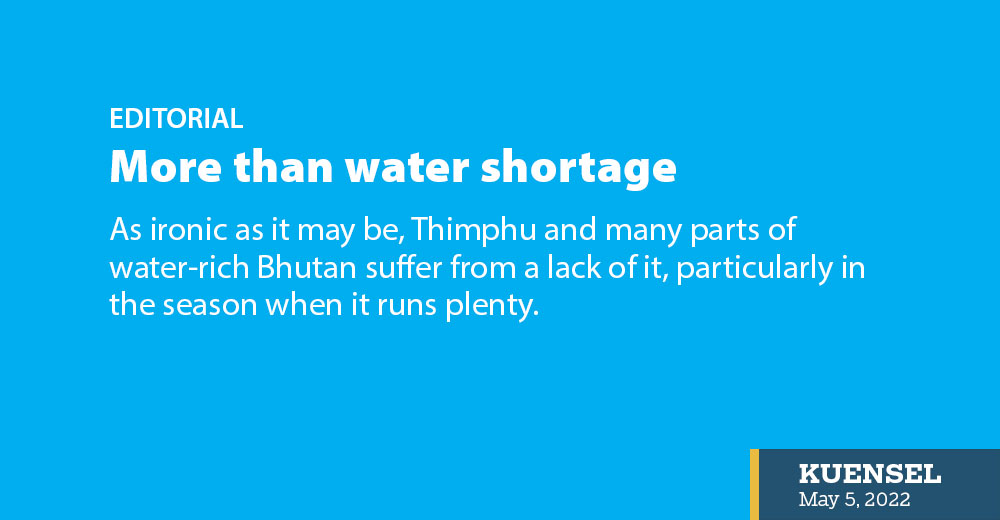As ironic as it may be, Thimphu and many parts of water-rich Bhutan suffer from a lack of it, particularly in the season when it runs plenty.
On the morning of May 1, the Thimphu Thromde announced that due to damage to the main water line near Kuzhugchen BHU, water supply to Taba, Lanjophakha, Changjiji, Changzamtog and the core areas are affected. The announcement said that they were hoping to repair the damage by afternoon.
On the following day, the main water supply line in Semtokha broke down and the water supply to Olakha, Changbangdu and some areas of Babesa was cut off. It was not announced when the thromde could finish the repairs and restore the water supply.
According to the thromde’s update on its Facebook page and website, it stated that their teams were still in the field trying to repair the damage to the mainlines.
Three days past, many homes and institutions across the city are waiting for water. The thromde’s tankers ran around delivering water. When most of the city of more than 100,000 residents is without water, they can only do so much. Many ended up buying bottled mineral water for drinking and washing. But there aren’t many who can afford to buy mineral water for drinking let alone wash their face and limbs with it.
It was a sad sight in the national referral hospital with no water even to run essential blood tests and toilet pots frothing to the brim.
The recent drinking water crisis in the capital city has left many cursing the thromde for its inefficiency in responding to the crisis and restoring the supply. But frustrations are mounting also because of the lack of timely communication.
Proper management of a crisis involves sharing timely information and updates with the public and controlling expectations besides concerted efforts to resolve the problem at hand. No matter how the workers toil to restore the supply lines, if the taps at homes and hospitals remain dry, for the public it’ll seem as if the thromde is sitting duck while the residents’ difficulties mount with each passing hour.
For instance, the thromde need to share when the water tankers would be there at a particular place. It is not to announce that the tankers would begin delivering free water in Olakha and Babesa from 8am. Do the residents wait for the tanker the whole day? Still, after having waited for the tankers for hours, residents complained about not seeing them.
For many years now, we have heard of developing contingency plans for disasters. By any standard, this water shortage is a crisis. It has even threatened the lives of patients. Water is an essential commodity and if the largest municipal authority in the country takes days to deliver it, it is a major failure on the part of the thromde. Who is responsible?


